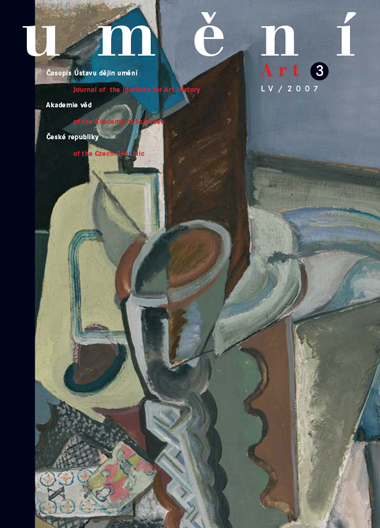Vojtěch Lahoda
´We Are Searching in History for Our Own Loves.´ Still-Life, Caravaggio and Cubism: A Czech Reading
This study deals with Caravaggio's role in Czech thought on Cubism. It begins with a discussion between Vincenc Kramář and Karel Teige which took place in 1949. Perhaps surprisingly, Teige refers to Caravaggio in his concept of Cubist 'tectonic painting': Caravaggio's painting aims at pure plasticity and less so at subject matter, which is reason for the avant-garde theoretician to put him in the same category as the architecture plate et colorée of Juan Gris or Picasso's 'tectonic paintings' in which the pure plasticity or sculpturality of matter dominates.
In presenting Caravaggio as a precursor of the modernist sculptural conception of painting, Teige was preceded by the Czech Cubist painter Emil Filla (1882-1953), who acquainted himself well with the works of the old Dutch masters during his exile in Holland in 1914-1920 and dealt with the idea of 'objectivity' in their work. In the introduction to 'Dutch Still Life' (1916), an article published in the magazine Volné směry (Free Directions) (XXII, 1924-1925), he mentions the name of Caravaggio, whom he takes to be the founder of a peculiar genre of still lifes which hearkened back to the Dutch masters of the 17th century. Filla emphasises the idea of objectivity which is neither a scientific documentary quality nor a pure objectivism, but the result of an action on the part of a subject-the creative act of a painter. For Filla, objectivity means a conciliation between objective and subjective factors in a painted object. In 1925, Filla published, also in Volné směry, a study on Caravaggio's vocation. Once again, Filla holds Carvaggio's sculptural conception of the surface of painting in high regard. Filla's work is followed up by his friend and collector, the patron of Cubism and art historian Vincenc Kramář in his essay 'The Inception and Character of the Modern Still Life: Caravaggio's Creative Act' (Volné směry XXIII, 1924-1925, pp. 129-160, 177-179). When Filla was writing his reflections on Jan van Goyen and on Caravaggio in the early 1950s at Peruc Castle, he was visited by the photographer Josef Sudek. He listened attentively to the well-versed painter's thoughts on Cubism, 17th-century Dutch art and Caravaggio. Sudek's photographically arranged still lifes in honour of Caravaggio of 1956 which he did not create until after Filla's death (1953) may be understood as a reminiscence of Peruc and his friend Filla as well as of the role of Caravaggio in Filla's theory.
Full-text in the Digital Library of the Czech Academy of Sciences:
https://kramerius.lib.cas.cz/uuid/uuid:bc8073d8-dae7-4ce6-b12e-dab614c0ff6b
< back

